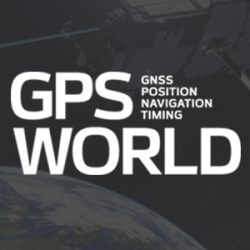
Second Russian SBAS Satellite Prepared for Launch
August 1, 2012
News courtesy of CANSPACE Listserv. Luch-5B, the second of a set of three geostationary satellites being launched to […]
Read More

News courtesy of CANSPACE Listserv. Luch-5B, the second of a set of three geostationary satellites being launched to […]

Luch-5A, the Russian geostationary communications satellite that carries a System for Differential Correction and Monitoring (SDCM) transponder, has started transmitting GPS corrections according to Javad Ashjaee, CEO of Javad GNSS. He has reported that L1 signals using PRN code 140 have been received by Javad receivers today and used to compute code-differential positions. Only GPS corrections are being received currently, no GLONASS corrections.

According to tracking information supplied by NORAD/JSpOC, spacecraft controllers have adjusted the orbit of the Russian SBAS satellite, Luch-5A. The satellite has been repositioned so that its sub-satellite longitude is 95 degrees east.

According to tracking information supplied by NORAD/JSpOC, spacecraft controllers have adjusted the orbit of the Luch-5A relay satellite. Luch-5A is the first of a set of three geostationary satellites being launched to reactivate Roscosmos’s Luch Multifunctional Space Relay System. The system will be used to relay communications and telemetry between low-Earth-orbiting spacecraft, such as the Russian segment of International Space Station, and Russian ground facilities.

The Siberian city Zheleznogorsk, a hub of Russian space and nuclear technology, fell on hard times in the 1990s. Now, GLONASS has infused a new life and vitality into this once-secret city, as described in a feature by Russia and India Reports.

The number of Russian centers providing services based on data received via GLONASS satellites will reach 25, Deputy Prime Minister Vladislav Surkov said Tuesday, according to a RIA Novosti report. The space service centers are engaged in satellite monitoring of traffic safety, road planning and cargo transportation on federal highways as well as natural dangers such as landslides, avalanches, and mud flows.

The GLONASS-K satellite, transmitting a CDMA signal in the L3 band, inaugurates a new era of radionavigation signals for both the Russian system and for international GNSS interoperability. As demand for high-precision services through dual- or triple-frequency user equipment increases, GLONASS will come to the forefront. The 2014 GLONASS-K2 satellite will have an FDMA signal in the L1 and L2 bands and CDMA signals in L1, L2, and L3. The overall constellation update will be completed in 2021. Another 2014 launch will fill the Russian SBAS orbit constellation with three geostationary space vehicles.

The recent broadcast of the first CDMA signal from the new GLONASS-K satellite culminates a long series of […]
Follow Us